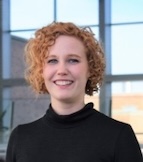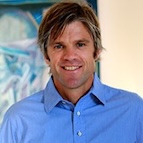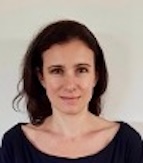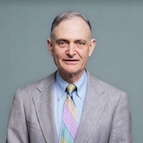
|
|
|
Keynote SpeakersAdrienne Campbell-Washburn, PhD Laboratory of Imaging Technology, National Institutes of Health, Bethesda, MD Web: https://www.nhlbi.nih.gov/science/laboratory-of-imaging-technology
“The Golden Bird”: The story of getting the right cage Talk Summary: No radiation and high reproducibility make magnetic resonance imaging (MRI) an invaluable modality also suitable for regular follow-up of long-term disease progress. Stronger magnetic field, allowing higher resolution, may not be actual advantage in functional assessment of heart. How does the development of low-field MRI enable detailed functional assessment to become widely clinically accessible? Does a low-field MRI provide a key advantage in MR image guided heart interventions? In addition, can functional lung imaging allow us to assess left atrial pressure and cardiopulmonary physiology? Could we infer pre- versus post-capillary pulmonary arterial hypertension? Biosketch: Dr. Campbell-Washburn is a Senior Investigator at the National Institutes of Health and chief of the Laboratory of Imaging Technology. She received her BSc in physics from the University of Western Ontario (Canada) and her PhD in medical physics from University College London (UK). Dr. Campbell-Washburn’s research focuses on the development of novel MRI technology for cardiac imaging, pulmonary imaging, and MRI-guided cardiovascular catheterization procedures. Specifically, Dr. Campbell-Washburn’s lab develops rapid imaging methods, and advanced open-source image reconstruction methods that integrate high performance computing into the clinical environment. Recently, her lab pioneered a high-performance 0.55T MRI system, which has been commercialized as a more accessible imaging technology, and demonstrated its value for cardiac and pulmonary imaging applications.
André La Gerche, MD, PhD Heart, Exercise and Research Trials (HEART) Lab, St Vincent’s Institute, Melbourne Australia Web: https://www.svi.edu.au/researchers/professor-andre-la-gerche
“The Goldilocks Issue”: What is just right? Talk Summary: ‘To understand exertional breathlessness, you must exert the breathless’. Exercise imaging provides an unparalleled insight into the pathophysiology of multiple cardiovascular pathologies. Exercise has a profound effect on cardiac remodeling. There has been an increasing body of evidence demonstrating that cardiorespiratory fitness can decelerate the disease progress and in some circumstances even reverse it. However, there is also an increasing awareness of the health consequences of extreme remodeling – too much and too little. Is there an opportunity for modeling to contribute into diagnostics and surveillance by combining exercise imaging with various clinical data and to help patient-specific prescriptions for exercise? Biosketch: André completed a PhD at St Vincent’s / University of Melbourne and 4 years of postdoctoral research at the University Hospital of Leuven, Belgium. Subsequently, he established his own research lab and cardiac imaging facility that produced several late-breaking clinical trials published in leading cardiovascular journals. His research and clinical work focuses on the effect of exercise on the human heart. He studies the range of health from severe heart and lung disease to elite athletic performance. André now heads the Heart Exercise And Research Trials (HEART) Lab that comprises a young team of multi-disciplinary researchers that combine innovative exercise testing and cardiac imaging to identify the factors that contribute to heart muscle dysfunction, heart rhythm problems and cardiac arrest. André has pioneered novel imaging techniques including exercise cardiac magnetic resonance imaging and contrast echocardiography. He has more than 300 peer-review publications and text-book chapters, serves on multiple international guideline statements and is regularly invited to present at all major international cardiology conferences.
Rob MacLeod, PhD University of Utah, The Scientific Computing and Imaging Institute and Department of Biomedical Engineering, Salt Lake City, UT Web: http://www.sci.utah.edu/~macleod
“The Cinderella Story: Making the pumpkin into a carriage”: The Ideal Approach for Atrial Arrhythmia Imaging & Modeling Talk Summary: Imaging has contributed immensely to the field of atrial arrhythmias in the past 20 years. But what are the key developments that can now be implemented? What insights do we have into measuring the uncertainty of our predictions? What is needed for the future to make the ideal “carriage” for Cinderella? Focus for the future: What do you lose/gain when sharing data and ideas? Can such connections create super-grand research groups that can facilitate clinically useful translations? Open-science risks and opportunities. Biosketch: Rob MacLeod was trained in Canada and Austria in physics, electrical engineering, and physiology & biophysics and has been on the faculty at the University of Utah since 1991. He is a full professor of Biomedical Engineering and Cardiovascular Medicine at the University of Utah. He is a co-founder and Deputy Director of the Scientific Computing and Imaging (SCI) Institute and has held a similar position at the Nora Eccles Treadwell Cardiovascular Research and Training Institute (CVRTI). He also co-founded the Consortium for ECG Imaging and is President of the Computing in Cardiology Society, which are both international groups dedicated to using computing approaches to explore all aspects of cardiac function, diagnosis, and care. He is a Fellow of the American Institute for Medical and Biological Engineering (AIMBE) and a Life Member of IEEE. Dr. MacLeod has a deep commitment to education, training, and mentorship and for the past 18 years has been Vice Chair and Director of the Undergraduate program in Biomedical Engineering. He contributes to numerous initiatives around the practice of teaching and learning, most recently the use of AI in teaching and learning. His research interests include computational electrocardiology with a special interest in both simulating and measuring bioelectric fields in the heart and body. He uses both experimental investigation and clinical approaches to improve the management of ventricular and atrial arrhythmias and to explore the mechanisms and indicators of acute myocardial ischemia. The broad range of techniques he and his teams use include scientific computing, imaging, image and signal processing, data science, and visualization as well as high-resolution capturing of bioelectric signals.
Adelaide de Vecchi, PhD King’s College London, School of Biomedical Engineering & Imaging Sciences, UK Web: https://www.kcl.ac.uk/people/adelaide-de-vecchi-1
Avoiding temptation of Hansel & Gretel: Clinical Translations and Science in Cardiovascular Modeling Talk Summary: Scientists continue to favor grant-funded research activities oriented toward technological development rather than its deployment in the real-world. This comes at the expense of talking with stake-holders, communicating research and providing usable solutions. Imaging and cardiovascular simulation has had major advances but too often research remains in academic publication and within the lab, never to be disseminated to the general public or other key stakeholders. In this talk, in addition to advances in cardiovascular simulations and modeling – important for any clinical application – I will address wide-broad questions related to research, such as: How do we highlight cases of successful translation? How can we better engage with patient groups and account for patient experience in our research? Is it possible to better communicate our ideas? Or, how to choose topics that are highly translational with prospects of dissemination? Biosketch: Since completing my PhD in aeronautics at Imperial College London, I have been working on precision cardiovascular medicine, first at the University of Oxford, then at King’s College London. This defined my research interest in data-driven models for disease prediction. I am now Head of the Department of Digital Twins for Healthcare at King’s College London, focussing on the development of Digital Twins for precision medicine by combining imaging, machine learning and modeling. My vision is not only to enhance technological synergies, but also to constructively engage all stake-holders – from engineers, to clinicians, to policy makers, to patients – to enable the full potential of the Digital Twin paradigm and its deployment. My specific research interests span blood coagulation modeling in thrombus formation, remodeling prediction in pediatric congenital heart diseases and aortic coarctation, modeling of cardiac valves implantation and machine learning based assessment of pulmonary hypertension. I also have a strong interest in responsible innovation, patient experience, and public engagement, for which I have started a UK-wide initiative to help students and early career researcher incorporate these elements in their work.
Leon Axel, PhD, MD New York University, Langone Health Web: https://nyulangone.org/doctors/1821052226/leon-axel
Highlights from FIMH 2025
|






